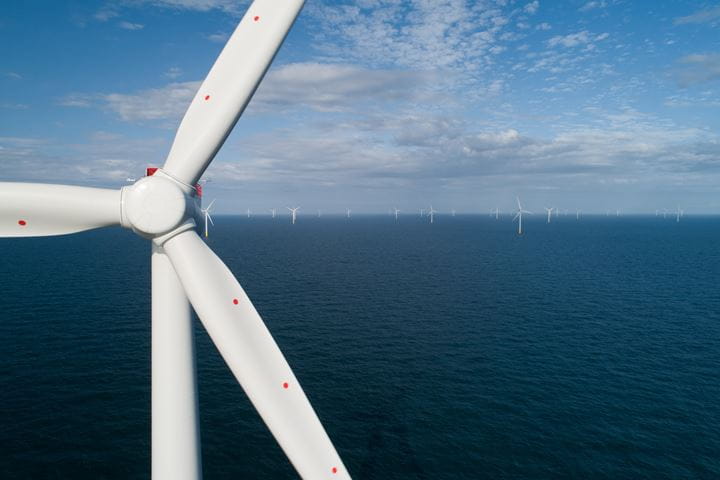“With this investment, we take yet another step into the renewable energy market which is actively contributing towards the green transition. We are proud to do so together with our business partner Ørsted, which is a front runner in this field and which has accumulated great expertise when it comes to establishing efficient offshore wind farms. The investment fits perfectly into our strategic work with focus on alternative investments that contribute to providing our customers with reliable and stable long-term returns,” says Allan Polack, Group CEO, PFA, partners in Walney Extension, opened September 2018.
In the UK we’ve grown at a rapid rate. In just thirteen years we’ve constructed enough offshore wind capacity to provide clean electricity for 3.2 million homes. By divesting 50 per cent of our projects to third party investors during the construction phase, we’re able to start developing a pipeline of new projects at an earlier stage instead of waiting until each project is finished before starting a new one.
We’ve been successful at bringing in partners to our projects as we continue to be responsible for the construction of the project. We also have significant operational expertise to safely and efficiently maintain the wind farm, whilst they provide an investment with a secure and stable cash flow for the lifetime of the project.
In the long-term it’s an attractive deal and a perfect model for them.
Which, as you’d expect, is leading to more and more major financial players investing in offshore wind. Pension and infrastructure funds, banks, and corporate and institutional investors alike have all been able to invest in clean growth by partnering with us, bringing billions of pounds to the UK and new investment opportunities for UK businesses.
It hasn’t always been like this; previously we’d typically divest 50% to one or two equity partners. However as our wind farms have grown (to well over 200 times the size of our initial projects!), that’s just not feasible any more. We’ve had to adapt and create new financing models.
Alongside our equity partner or partners, to help make up the other 50%, we bring in lenders who act as traditional financiers rather than owning any equity (n.b. Finance 101: Lenders take on less risk than equity partners, but as a result expect lower return).
Although we have no contractual relationship with these lenders, we coordinate and arrange the finance for our partners, resulting in a simpler investment offer on all sides.
By successfully demonstrating this model overseas, when it came to financing Walney Extension (the world’s biggest offshore wind farm, constructed right here in the UK), we were able to create a bond structure and for the first time work with UK insurance companies and pension funds that traditionally haven’t invested significantly in renewable energy.
We try as much as possible to introduce local lenders to our projects and due to the long-term stability our model offers, this has enabled UK companies to enter into a whole new class of renewable investment assets.
We’ve been able to provide these solutions by taking on more risk, which we are able to do as a result of our years of experience in developing, constructing and operating offshore wind farms. With over a quarter of the world’s capacity installed not only have we led the world in the deployment of this technology, we’ve also pioneered developing these long-term investment opportunities, enabling companies that previously felt unable to invest in offshore wind to join this exciting industry. We’ve even won international awards for our innovative project financing including the global Project Finance International award “European Renewables of the Year” and the “Wind Energy Deal of the year” by IJGlobal (Infrastructure Journal Award).
Why does any of this matter?
The real benefit from this new financing model is that as well as providing a new, secure investment opportunity for UK investors, it is also helping to drive down the cost of clean electricity. The cost of financing our projects has reduced significantly by bringing new investors into offshore wind and this lowers the overall cost of capital.
Renewables are now a stable asset class with large scale, long-term investment opportunities. The current and previous financial support mechanisms in the UK have not only enabled the industry and its supply chain to slash costs, they have provided the long-term stability required to open up this growing market to new kinds of investors.
I think most people would agree that Ørsted has had a pioneering approach to offshore wind. We’re known globally for installing the most offshore wind capacity, being the first to install new turbine models or constructing the biggest offshore wind farms in the world – but I think this ”back office” innovation is just as important. There will be many changes as we move to a low carbon electricity system, but with change comes opportunity and I’m proud to work for a company leading the way not just in offshore wind development, but also in financial solutions for clean growth.
